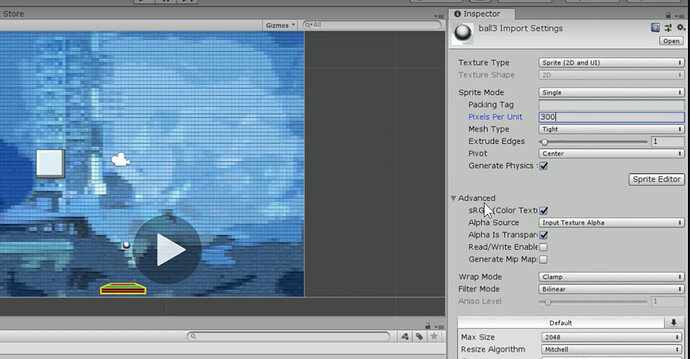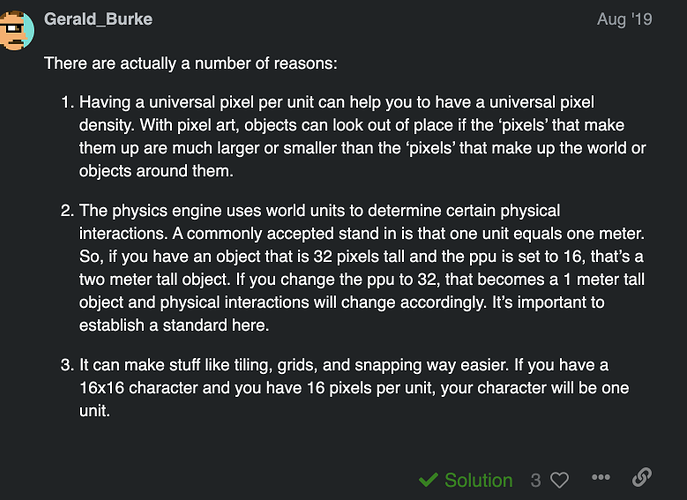Hi,
Usually, if you create your own sprites, you make their dimensions relative to one another. The sprite for the human would, for example, be 100 x 100 px but the house would be 400 x 400, or something like that. In this scenario, a “universal PPU”, e.g. 100, would make sense because we want the house to be bigger than the human in the scene. The human could be 1 World Unit high (WU), the house 4 WU. Unity does that automatically for us.
However, if we set the PPU of the human to 100, and the PPU of the house to 400, both sprites would fill out 1 x 1 WU, which is probably not the desired ourcome.
I don’t know if the scale values have got a significant impact on the performance of the shader. Theoretically, the shader has to “work” anyway because 1 WU does not necessarily match a 100 x 100 px square on our monitor.
Changing the scale is “dangerous” if you want to use the game object in the physics simulation. The mass of the game object could be affected by the scale. For this reason, it’s “better” to use the PPU for increasing/decreasing the size of a sprite in your game.
Hope that makes sense. 
See also:




